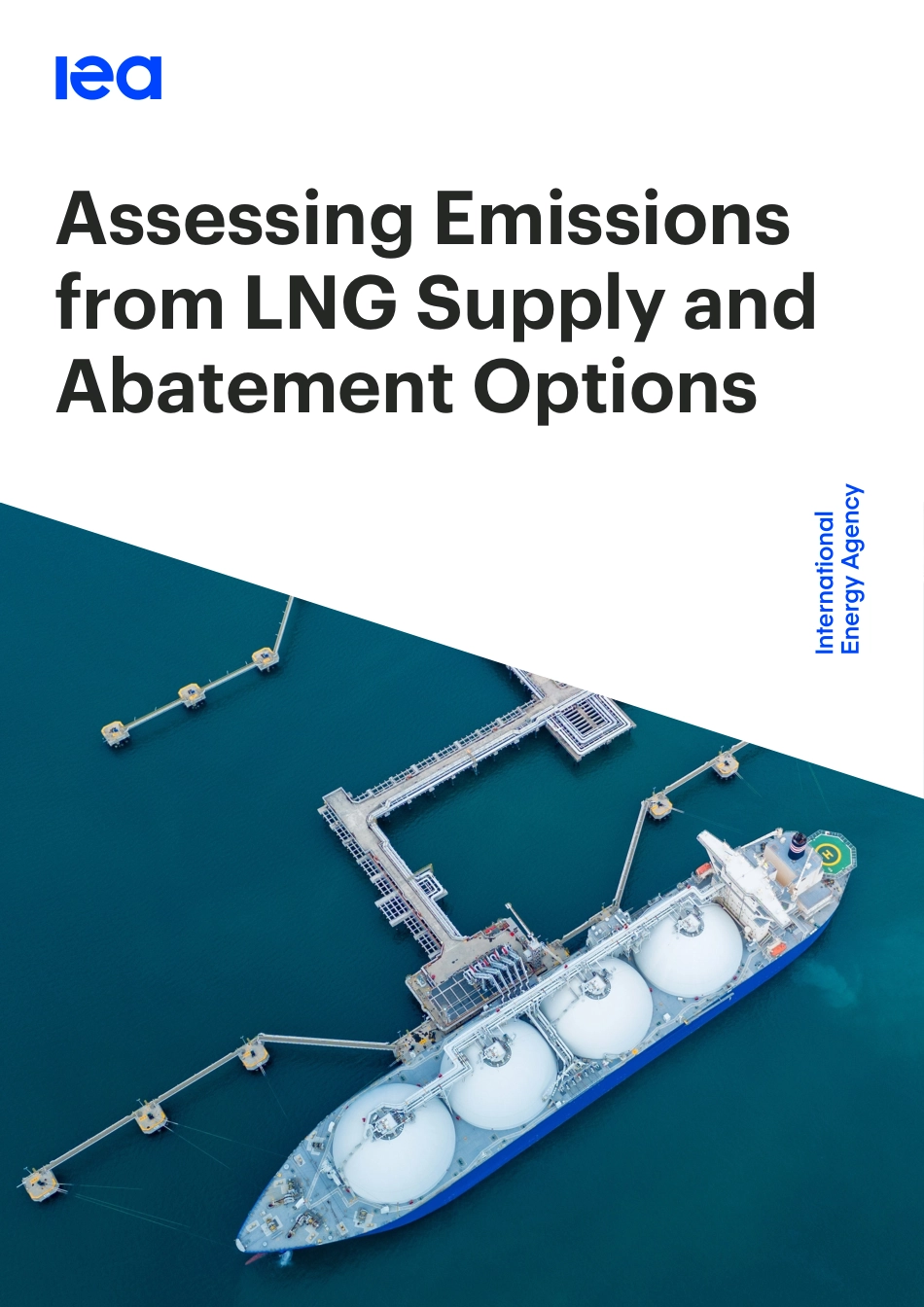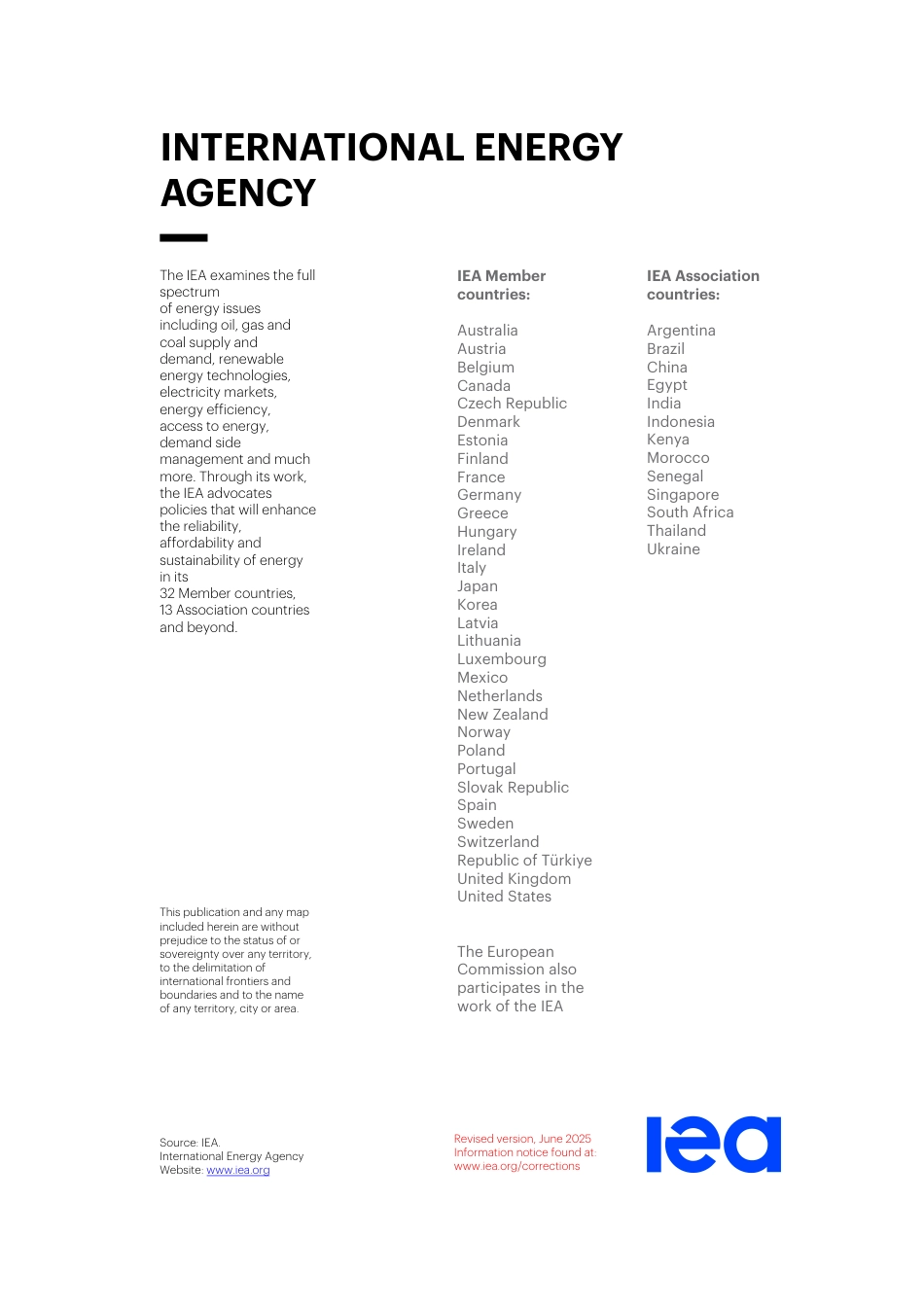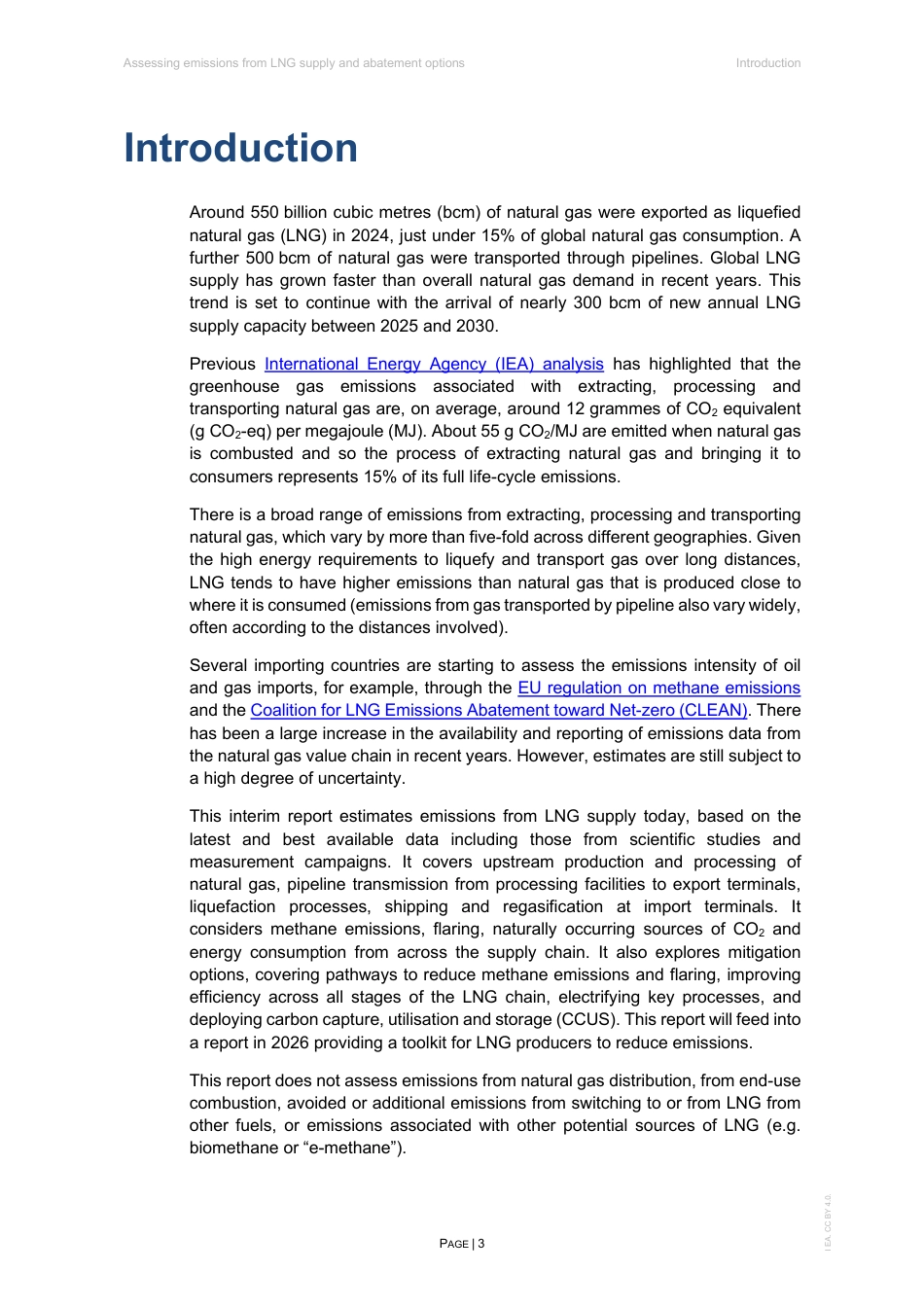Assessing Emissions from LNG Supply and Abatement OptionsThe IEA examines the full spectrum of energy issues including oil, gas and coal supply and demand, renewable energy technologies, electricity markets, energy efficiency, access to energy, demand side management and much more. Through its work, the IEA advocates policies that will enhance the reliability, affordability and sustainability of energy in its 32 Member countries, 13 Association countries and beyond.This publication and any map included herein are without prejudice to the status of or sovereignty over any territory, to the delimitation of international frontiers and boundaries and to the name of any territory, city or area.Source: IEA. International Energy Agency Website: www.iea.orgIEA Member countries: AustraliaAustriaBelgiumCanadaCzech Republic DenmarkEstoniaFinlandFranceGermanyGreeceHungaryIrelandItalyJapanKoreaLatviaLithuania Luxembourg Mexico NetherlandsNew Zealand NorwayPolandPortugalSlovak Republic SpainSweden Switzerland Republic of Türkiye United Kingdom United StatesThe European Commission also participates in the work of the IEAIEA Association countries:Argentina BrazilChinaEgyptIndia Indonesia Kenya Morocco Senegal Singapore South Africa Thailand UkraineINTERNATIONAL ENERGYAGENCYRevised version, June 2025Information notice found at: www.iea.org/correctionsAssessing emissions from LNG supply and abatement options Introduction PAGE | 3 I EA. CC BY 4.0. Introduction Around 550 billion cubic metres (bcm) of natural gas were exported as liquefied natural gas (LNG) in 2024, just under 15% of global natural gas consumption. A further 500 bcm of natural gas were transported through pipelines. Global LNG supply has grown faster than overall natural gas demand in recent y...



